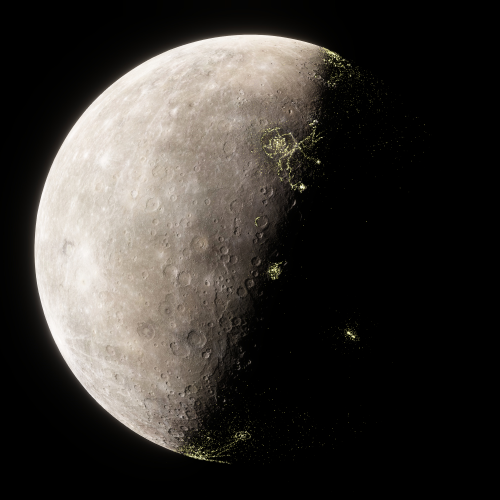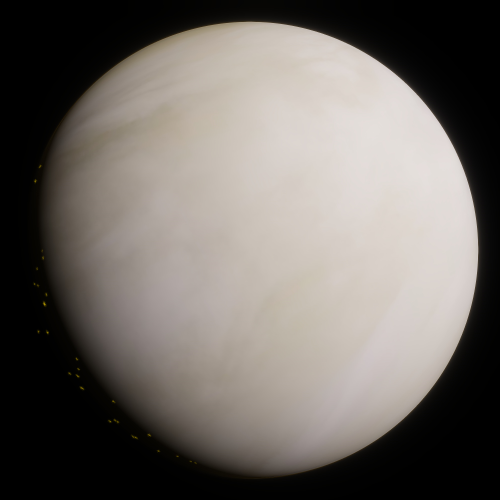Continuing This Series - Tumblr Posts


Mercury is a small, airless world in the deep inner Sol system, the closest planet to its sun and consequently a world of thermal extremes. Its solar day is over 1400 metric hours long, meaning that any point of the surface is exposed to sunlight for 700 hours or more. Because of this Mercury isn't an especially populated world –just under twenty million souls live and work almost entirely beneath its rocky crust– but the surface facilities shine brightly because there is no atmosphere to dull their light.
Much of Mercury’s 19.4 million inhabitants are concentrated in the capital city of Lóng Cháo, embedded into and under the surface of Rachmaninoff Crater (seen here on the terminator line, in the northern hemisphere). Its orbital space, however, is busier, serving as a hub for the ore traders hauling raw materials from one side of the solar system to the other.
Mercury is an autonomous territory of the United Sol System, as part of the Inner System Territories. Its flag, an inverted monochrome depiction of its penumbra, is shown below the main image.
more worldbuilding stuff! photobash of a future human-inhabited Mercury, plus its flag, created for my hard science fiction setting Diaspora. done using assets from Space Engine.


Venus is the second planet in the Sol system, an Earth-sized rocky world with a dense, hot CO2 atmosphere and aggressively volcanic surface. The only habitable zone of Venus is a relatively thin layer of atmosphere some fifty kilometers above the surface, where the temperature and pressure closely resemble conditions at sea level on Earth.
Because of this air layer, the skies of Venus are swarming with aerostat habitats to support its 25.4 million inhabitants (seen here as a scattering of hazy glowing dots in the thin crescent of twilight). The largest aerostat is the capital city of Najam Alsabah, nestled in the lower stratosphere. One of the key drivers of Venus’ growing population is its wealth: the territory has become quite prosperous over the last several centuries due to the harvest and export of valuable, rare chemicals such as nitrogen, sulfur, and phosphorous.
Venus is an autonomous territory of the United Sol System, as part of the Inner System Territories. Its flag, a bicolor high-contrast depiction of its vast atmospheric cloud waves, is shown below the main image.
at last, some more worldbuilding stuff! photobash of a future human-inhabited Venus, plus its flag, created for my hard science fiction setting Diaspora. done using assets from Space Engine.